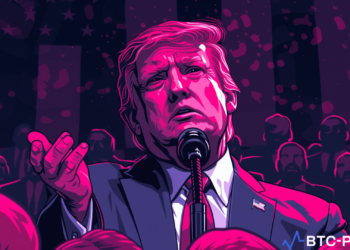CoinDCX CEO Clarifies India’s Crypto Tax Regulations and Their Impact
Sumit Gupta, co-founder and CEO of Indian crypto exchange CoinDCX, discussing how India’s crypto tax policies have impacted the industry.
The introduction of taxes for cryptocurrencies in the 2022 Union Budget was a watershed moment for the crypto economy in India. Under section 2(47A) of the Income-tax Act 1961, digital currencies were labeled as virtual digital assets (VDA). A sector that was once mired in ambiguity was injected with a sense of legitimacy and delineated towards a clear regulatory path.
Regulatory Clarity and Its Burdens
However, the regulatory clarity came alongside some burdens of its own. A 30% tax rate, paired with an additional 1% TDS on transactions, soon became a deterrent for retail traders. Trading volumes crumbled and drove the crypto economy underground or to more tax-friendly shores.
Nevertheless, industry experts like Gupta are all for formal recognition and the structured environment of cryptocurrencies that now exist.
Common Misconceptions and Clarifications
While it has been more than a year since the introduction of this new framework, confusion and a proliferation of misconceptions among both new and seasoned investors remain. The everyday investor is still grappling with the complexities of reporting and calculating taxes on their transactions, particularly with respect to staking, mining, and the use of crypto in everyday business transactions.
Different Tax Treatments
Gupta looks to clarify some of the more complex aspects of cryptocurrency taxation, addressing common misconceptions and providing a clearer understanding of the regulations.
Crypto trading and mining profits are subject to a flat 30% tax, with no deductions or loss offsets allowed. However, staking income is taxed based on the individual’s income tax slab, potentially offering a lower rate. The Web3 sector, including CoinDCX, is urging the government to reduce the 30% tax rate on Virtual Digital Assets (VDAs) to align with other asset classes, especially securities.
Common Misconceptions About Crypto Taxes
It’s crucial to dispel the misconception that all crypto activities are taxed at a flat 30% or that staking rewards are only taxable upon sale. Staking rewards are taxable at receipt, based on market value. Additionally, trading losses cannot offset other income types. Investors should maintain detailed records and seek professional tax advice for effective navigation and compliance. CoinDCX has partnered with KoinX to help users file crypto taxes. This platform allows users to track tax computations, connect multiple exchanges and wallets, and view real-time tax amounts for all crypto transactions, including NFTs and DeFi investments.
Global Cryptocurrency Regulations and India’s Stance
The G20 discussions, especially those held in India, provided a robust platform for shaping global crypto regulations. Such wide-ranging consultations are crucial for developing comprehensive frameworks that can be adapted by individual countries. For India, these discussions offer a template for regulatory clarity, ensuring a balanced approach that benefits all stakeholders.
Inclusion Under the Prevention of Money Laundering Act (PMLA)
The inclusion of VDA transactions has been a win-win situation as it gives policymakers a platform for oversight and discourages illicit actors. This regulation necessitates strict adherence to KYC (Know Your Customer) and AML (Anti-Money Laundering) procedures, leading to enhanced transparency and reduced risk of illicit activities.
Challenges for High-Frequency Traders
The 1% TDS rule poses significant challenges for traders in India, primarily by reducing liquidity and pushing users towards offshore exchanges that do not deduct TDS. This has led to a massive shift of more than 95% of trading volumes to exchanges outside India, adversely affecting domestic players. To mitigate these issues, the industry is advocating for a reduction of TDS to 0.01%, which would help maintain government oversight while keeping the market attractive for investors.
Potential for Reduced Tax Burden
The industry has been advocating for a reduction of TDS to 0.01%, which would maintain the government’s objective of tracking financial flows while making the market more attractive for investors. We are hopeful that the government will consider this request of reducing the tax burden on crypto transactions, particularly the TDS rate, to foster a more conducive environment for innovation and investment.
Balancing Innovation and Compliance
Balancing innovation with tax compliance requires a nuanced approach, where regulations are clear and supportive of technological advancements while ensuring robust oversight to prevent misuse. Engaging with industry stakeholders and studying global best practices can help create a balanced framework.










